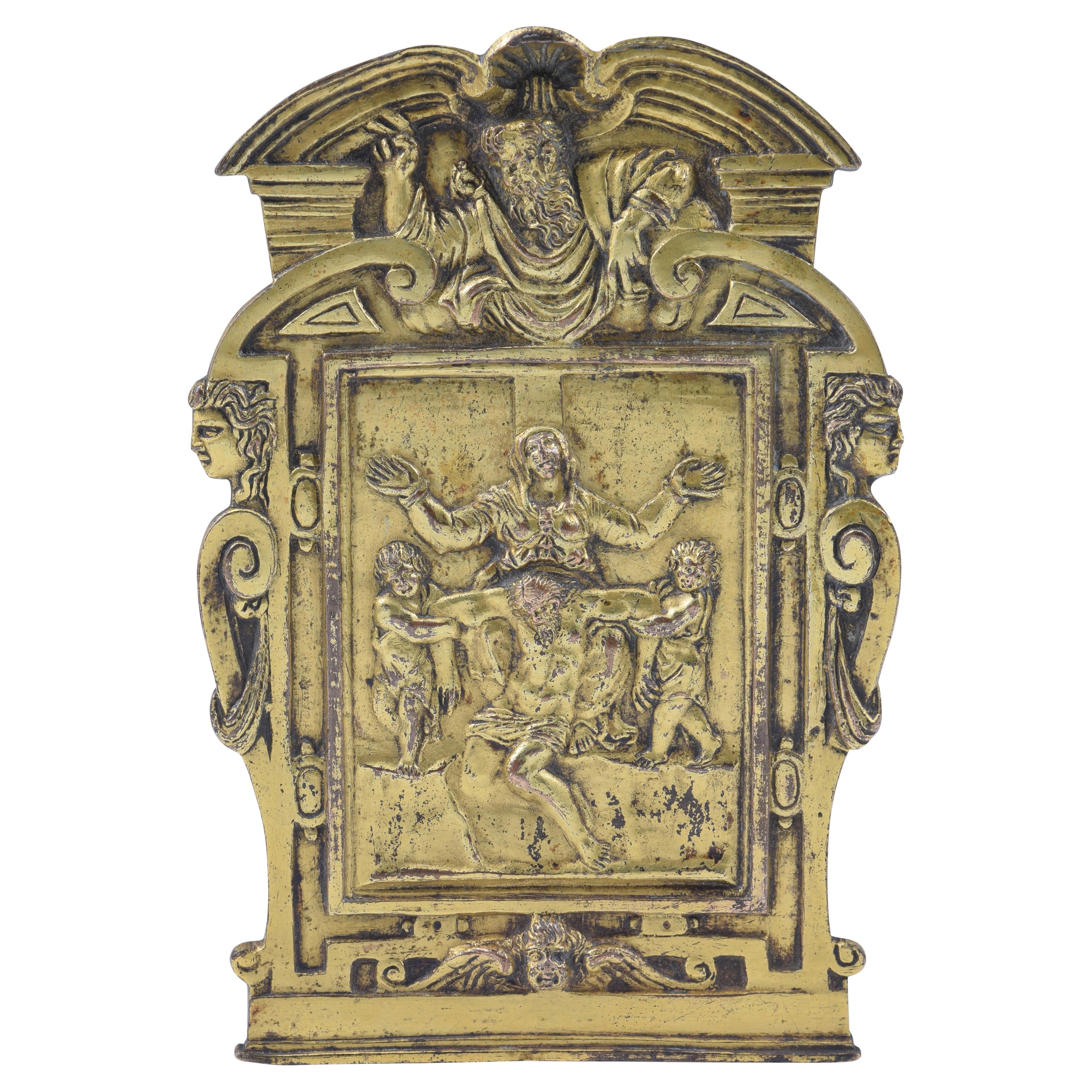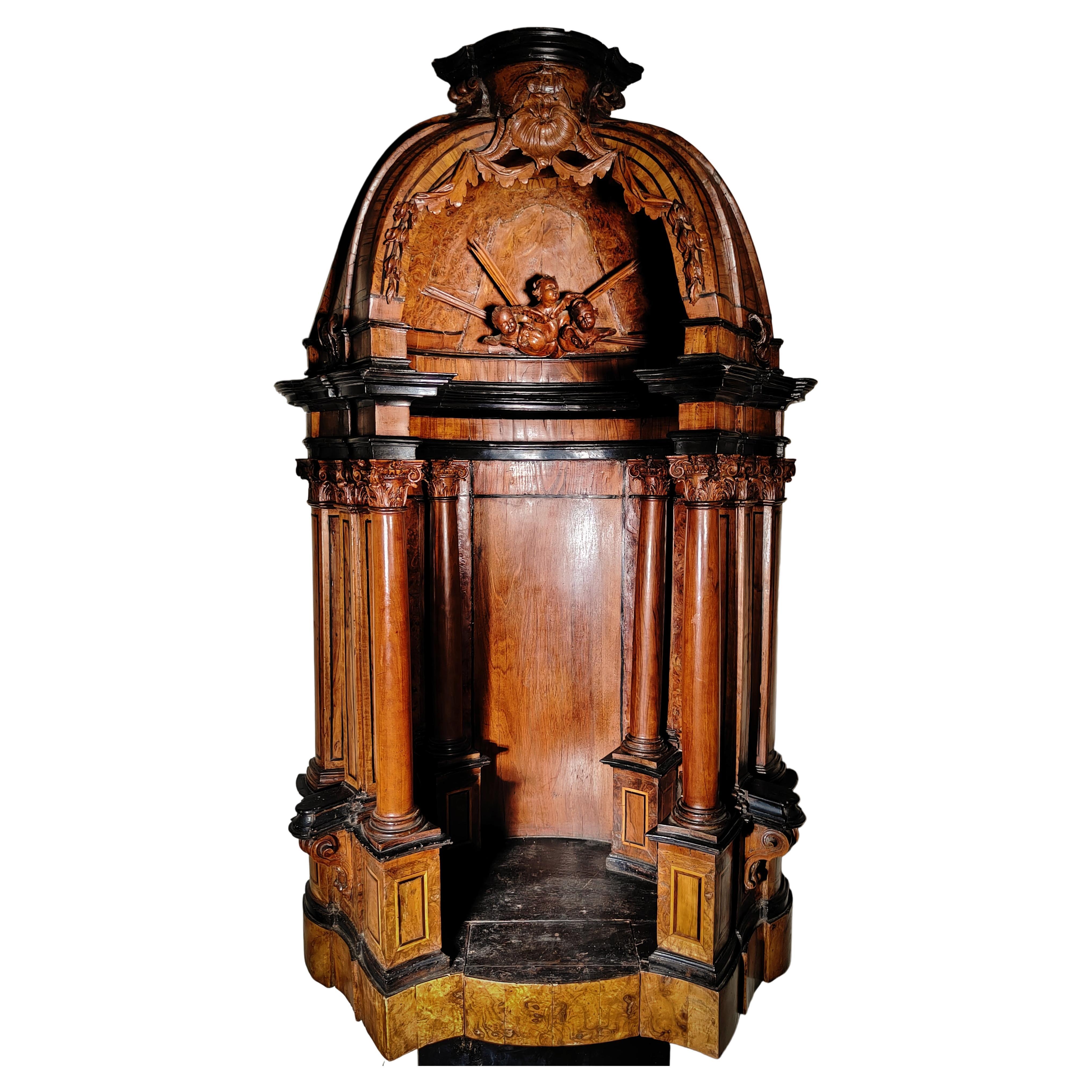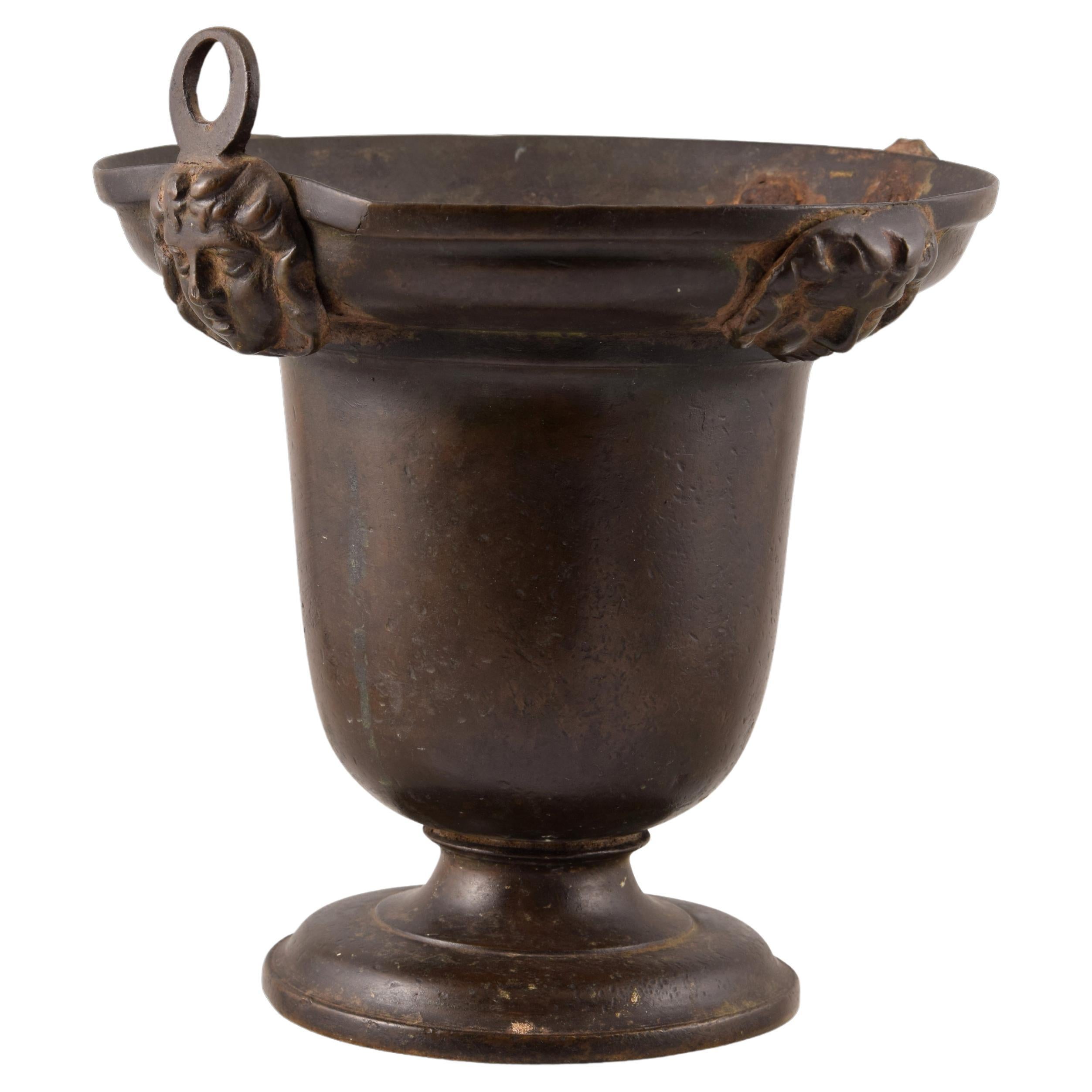Items Similar to Large Nepalese Gilt Bronze Stupa, 16th/17th Century, Nepal
Want more images or videos?
Request additional images or videos from the seller
1 of 21
Large Nepalese Gilt Bronze Stupa, 16th/17th Century, Nepal
About the Item
A spectacular large Nepalese stupa, of cast and repousse gilt bronze or copper alloy, 16th/17th century, Nepal.
The magnificent stupa of traditional form, featuring a stylized lotus base supporting a large dome. A square structure, called a harmika, sits upon the dome. Each side of the harmika featuring engraved Buddha Eyes, also called Wisdom Eyes. Torana rise above each of the four sides.
A tall spire, known as a yasti, rises from the squareharmika. Attached to the yasti are a set of thirteen graduated discs, known as chatras, giving the spire a tapered form. The chatras represent Bhumi, or the foundations that support the path to enlightenment.
The spire is topped by another stylized lotus platform with a rising square pillar topped by a dome of rock crystal. The rock crystal dome is protected by a large parasol with large streaming banners to the sides, and delicate bodhi leaf shaped pendants suspended from the edges.
Above the parasol, topping the stupa, is a gajur, or finial, of stylized lotus blossom and lotus bud form.
The stupa seems to be somewhat based on the famed Swayambhunath Stupa in Nepal, most notably the structure of the spire, with the thirteen tiers surmounted by the parasol, as well as the gajur. While the torana are of slightly different shape and contain images of vajra and flowers instead of Buddhas.
Stupa are important structures and monuments in the Buddhist world. Originally large scale structures to commemorate holy sites or house sacred relics, the earliest stupa were based off early Indian burial mounds.
- Dimensions:Height: 45 in (114.3 cm)Diameter: 22 in (55.88 cm)
- Materials and Techniques:
- Place of Origin:
- Period:
- Date of Manufacture:circa 1600
- Condition:Repaired: The lotus section with wire repairs. Wear consistent with age and use. Minor losses. Minor structural damages. Minor fading. In very good condition for age, with wear, scratches and dents. Missing several hanging elements. The stupa leans slightly. The lotus base with wire repairs. The 9th chatra with damage. The parasol and finial askew. .
- Seller Location:Austin, TX
- Reference Number:1stDibs: LU894725175062
About the Seller
5.0
Platinum Seller
These expertly vetted sellers are 1stDibs' most experienced sellers and are rated highest by our customers.
Established in 2001
1stDibs seller since 2010
306 sales on 1stDibs
Typical response time: 1 hour
- ShippingRetrieving quote...Ships From: Austin, TX
- Return PolicyA return for this item may be initiated within 7 days of delivery.
More From This SellerView All
- Large Himalayan Inlaid Bronze Vajra with Wrathful Faces, 15th-16th CenturyLocated in Austin, TXA large and unusual Himalayan bronze and mixed metal nine prong vajra featuring wrathful faces. In the style of the Tangut (Western Xia) Kingdom (1038 to 1227), but probably later, most likely 15th-16th century. The body of the vajra crafted from a copper alloy, with five wrathful faces on either side and gold and silver inlays to the center. The prongs crafted of iron, with each side having eight prongs arcing outwards around a central prong before coming back to a copper alloy point. The vajra is meditational tool...Category
Antique 16th Century Mongolian Metalwork
MaterialsGold, Silver, Bronze, Iron
- Chinese Ming Dynasty Silver Nine Phoenix Coronet Crown, 16th/17th CenturyLocated in Austin, TXAn amazing and rare Chinese silver Nine Phoenix Coronet or Crown, Ming Dynasty (1368 to 1644), late 16th to early 17th century, China. A delicate and...Category
Antique 18th Century and Earlier Chinese Metalwork
MaterialsSilver, Gold
- Chinese Archaisitc Bronze Small Scholar Vase, 17th Century, ChinaLocated in Austin, TXA fine small archaistic scholar's vase in the form of a zun, Ming to Qing Dynasty, 17th century, circa 1650, China. The small vessel of elegant proportions and wonderfully cast. T...Category
Antique Mid-17th Century Chinese Qing Scholar's Objects
MaterialsBronze
- Chinese Bronze Scholar Vase with Taotie, Ming/Qing Dynasty, 17th century, ChinaLocated in Austin, TXA small and interesting cast bronze archaistic scholar vase with loose ring handles and taotie mask design, late Ming or early Qing Dynasty, mid 17th century, China. The small vase of archaistic hu form, and cast with archaistic designs. Sitting on a tall splayed ring foot, the round body is cast with a large band featuring a ferocious taotie (ogre) mask. The taotie mask in this case id decidedly feline, with a ruyi shaped snout above a whiskered mouth. Two flanges stick out to either side of the mask, reminiscent of ears. A wide, tall neck rises from the body, terminating in a slightly everted mouth. The archaistic cast design on the neck is not as clear, but most likely represents Fusang, a mythical island in the Eastern Sea where the legendary Fusang tree grows. The Fusang tree, home to the mythical Sun Bird...Category
Antique Mid-17th Century Chinese Qing Scholar's Objects
MaterialsBronze
- Chinese Bronze Chilong Garlic Head Scholar's Vase, Qing Dynasty, 17th C, ChinaLocated in Austin, TXA small and lovely Chinese cast bronze garlic head scholar's "chilong" vase, early Qing Dynasty, Kangxi period, late 17th century, China. The elegant vase of beautiful proportion...Category
Antique Late 17th Century Chinese Qing Scholar's Objects
MaterialsBronze
- Khitan Liao Dynasty Gold Clad Horse Trappings, 10th-11th Century, ChinaLocated in Austin, TXA wonderful and rare set of Khitan Liao gold clad copper alloy repousse horse trappings, featuring thirteen pieces on a modern museum display mount, Liao Dynasty...Category
Antique 15th Century and Earlier Chinese Tang Metalwork
MaterialsCopper, Gold
You May Also Like
- Gilt bronze pax board, Pietà. 16th-17th centuries, after Michelangelo BuonarrotiLocated in Madrid, ESPeacekeeper, Mercy. Golden bronze. Possibly Rome, last third of the 16th century-first quarter of the 17th century, following the model of Michelangelo Buonarroti. Gilded bronze pla...Category
Antique Early 17th Century European Renaissance Religious Items
MaterialsOther, Bronze
- Antique 16th Century Islamic Safavid Al Jazari Combination Locking Brass CasketLocated in Portland, ORA highly important engraved Islamic combination locking brass casket, based on a design by the 12th Century Arab inventor & artist Ismail Al Jazari. Circa...Category
Antique 16th Century Iraqi Islamic Metalwork
MaterialsBrass
- Important German Tabernacle Museum Piece 16th-17th CenturyLocated in Madrid, ESImportant German Tabernacle Museum Piece 16th-17th century IMPORTANT GERMAN TABERNACLE IN MUSEUM 16TH-17TH CENTURY EXCEPTIONAL SOUTHERN GERMAN TABERNACLE...Category
Antique 16th Century Religious Items
MaterialsFruitwood
- Bronze Situla, 16th CenturyLocated in Madrid, ESAcetre. Bronze. Century XVI. Bronze piece that has a circular foot, and a circular body, with an outwardly hollowed mouth at the top, and a decoration in relief in this last area o...Category
Antique 16th Century European Renaissance Religious Items
MaterialsBronze
- 19th Century Bronze BullLocated in Perth, GBA beautifully modelled bronze bull of classic form. The piece measures approximately 15cm x 8.5cm x 5cm or 6 inches x 8.5 inches x 2 inches.Category
Antique Mid-19th Century Metalwork
MaterialsBronze
- German 16th-17th Century Brass Baptismal Basin, Probably NurembergLocated in Virum, DKA German 16th-17th century embossed and chiseled brass baptismal basin adorned with Virgin Mary standing on a crescent moon and (unreadable) text, probably Nuremberg. The basin featu...Category
Antique Early 17th Century German Religious Items
MaterialsBrass





